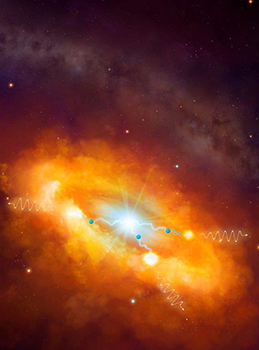Latest News Archive
Please select Category, Year, and then Month to display items
![]()
The Vice-Chancellor and Principal of the University of the Free State, Prof Francis Petersen, is pleased to invite you to the launch of the Artists in Residency Programme. This event marks the exciting start of a new initiative at the university.
We are honored to have Mike van Graan, a distinguished independent artist and playwright, as our inaugural artist and playwright in residence. Van Graan boasts an impressive career, having authored 36 plays and contributing significantly to the cultural landscape. His expertise extends beyond playwriting, encompassing cultural policy, artist network development (both locally and across Africa), and advocacy work. Notably, he held leadership positions within esteemed organisations such as Arterial Network, the African Arts Institute, and the STAND Foundation. Van Graan's dedication to cultural activism and artistic creation is widely recognised.
Please join us for this momentous occasion:
Date: Thursday 27 June 2024
Time: 15:00-17:00 (followed by a cocktail reception)
Venue: Scaena Theatre, UFS Bloemfontein Campus
For further information, contact Alicia Pienaar at pienaaran1@ufs.ac.za.
Programme highlights include:
- Staged Reading: An excerpt from Return of the Ancestors, a play that pays homage to the satirical South African political play, Woza Albert, explores themes of democracy and sacrifice through the return of figures such as Steve Biko and Neil Aggett.
- Closed Premiere: The Good White, set against the backdrop of the 2015/16 student protests in South Africa, delves into contemporary issues such as race, social justice, and the complexities of human relationships.
Two scientists part of team that discovers the source of the highest energy cosmic rays at the centre of the Milky Way
2016-03-22

Artist's impression of the giant molecular clouds surrounding the Galactic Centre, bombarded by very high energy protons accelerated in the vicinity of the central black hole and subsequently shining in gamma rays.
Artist's impression: © Dr Mark A. Garlick/ H.E.S.S. Collaboration Spotlight photo:
Dr Brian van Soelen and Prof Pieter Meintjes of the UFS Department of Physics.
Photo: Charl Devenish
|
H.E.S.S. (High Energy Stereoscopic System) scientists publically revealed their latest galactic discovery in the international science journal, Nature, on 16 March 2016. These scientists were able to pinpoint the most powerful source of cosmic radiation – which, up to now, remained a mystery.
Part of this team of scientists are Prof Pieter Meintjes and Dr Brian van Soelen, both in the University of the Free State (UFS) Department of Physics. Dr Van Soelen explains that they have discovered a proton PeVatron – a source that can accelerate protons up to energies of ~1 PeV (10^15 eV) – at the centre of the Milky Way. The supermassive black hole called Sagittarius A has been identified as the most plausible source of this unprecedented acceleration of protons.
The protons are accelerated to Very High Energy (VHE) gamma rays. The energy of these protons are 100 times larger than those achieved by the Large Hadron Collider at CERN (the European Organization for Nuclear Research).
According to Dr Van Soelen, the fact that this research has been published in Nature demonstrates the importance and pioneering nature of the research conducted by H.E.S.S. The H.E.S.S. observatory – operational in Namibia – is a collaboration between 42 scientific institutions in 12 countries.
In 2006, H.E.S.S. was awarded the Descartes Prize of the European Commission – the highest recognition for collaborative research – and in 2010 the prestigious Rossi Prize of the American Astronomical Society. The extent of the observatory’s significance places it among the ranks of the Hubble Space Telescope and the telescopes of the European Southern Observatory in Chile.
“The next generation VHE gamma-ray telescope,” Dr Van Soelen says, “will be the Cherenkov Telescope Array (CTA), which is currently in the design and development stage.” Both Dr Van Soelen and Prof Meintjes are part of this project as well.
H.E.S.S. has issued a complete statement about the paper published in Nature.